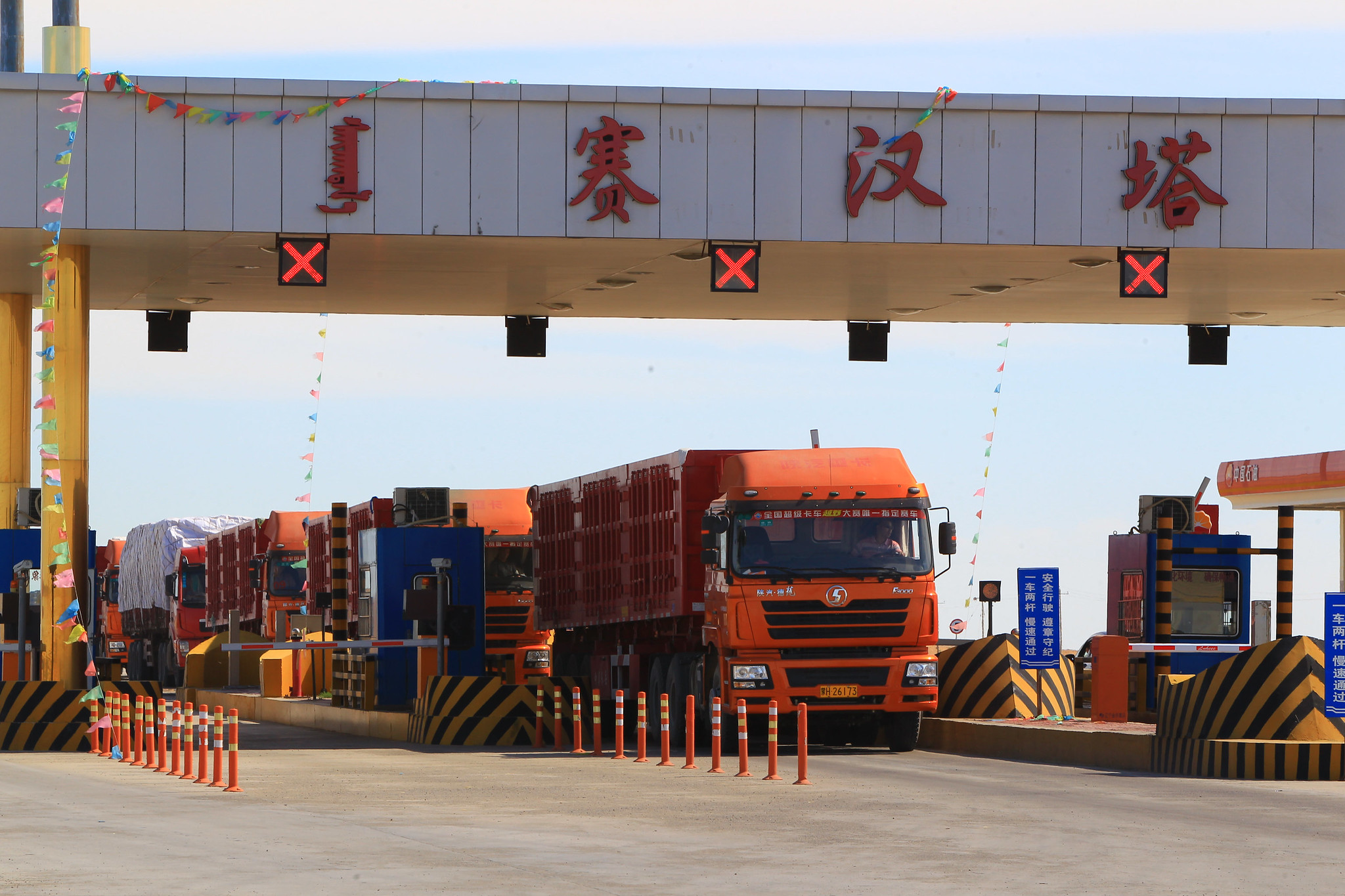Analysts see a potential market of 3 trillion yuan emerge as established funding model is introduced to Chinese investors for the first time
(AF) China has begun shifting the risk of funding huge infrastructure projects from local governments to investors as the central bank begins tapering record volumes of pandemic recovery stimulus.
It’s gambling on real estate investment trusts (REITs), a new type of financial vehicle in China, to help finance public works such as highways and business parks while allowing investors to tap into the country’s property growth. The first batch are expected to raise 30 billion yuan ($4.7bn) in total and have received regulatory approval to start selling on Monday.
The move comes as the People’s Bank of China begins to claw back the 1.15 trillion yuan it issued in special bonds last year in an effort to balance credit risks in the domestic market. With the economy growing from the damage of the pandemic downturn this time last year, financial planners are worried that the recovery will overheat and create an inflationary cycle that could see an increase in interest rates.
“Overall, the risks of investing in public REITs are relatively low, which make them ideal for investors that have a lower risk appetite,” says Chen Mengjie, an analyst from Yuekai Securities. “We expect that REITs will become a mainstream financial product in China’s capital market.”
Also on AF
China’s infrastructure REITs program faces a bumpy path
Although commercial properties are excluded for fear of stoking asset bubbles, REITs are favoured by authorities because they could help ramp up infrastructure investment to revive and reshape the Chinese economy after it was hammered by the coronavirus pandemic.
The Shanghai and Shenzhen exchanges recently said in separate statements that the China Security Regulatory Commission (CSRC) approved the registration of the first batch of REITs – five to be listed in Shanghai and four in Shenzhen.
The green light, which will allow the securities to be sold and traded on stock exchanges, comes more than a decade after China started researching and experimenting with the potential market. Also it comes about a year after Beijing announced plans for a pilot scheme. China previously allowed only privately sold quasi-REITs in the real-estate sector.
First REITs start selling on Monday
Of the nine REITs, three will channel investors’ money into industrial parks in Suzhou, Shanghai, and Shenzhen. Two will finance tollways in Guangdong and Zhejiang provinces. Another two will fund warehouse projects and the others will invest in waste-to-energy and sewage plants.
The trusts began pricing inquiries among institutional investors this week, and all nine will start selling on Monday.
The durations of the nine REITs range from 20 to 99 years.
The estimated yields of the trusts that invest in Shougang’s waste-to-energy plant, the tollway in Zhejiang, and the sewage plant at Beijing Capital, are 6.91%, not less than 6%, and 6%, respectively, according to the fund managers.
“The yields are higher than the 4-5% figure we previously anticipated, and are overall quite good,” analysts from CIB Research said.
Most REITs trade at a premium in the early days after their listing, and then become under-valued afterwards, judging by the market performance of other REITs such as Hong Kong’s Link REIT, Song Shiyi and Deng Hu, analysts from Shenwan Hongyuan Securities, said.
“Because infrastructure REITs are operated in an enclosed manner with long durations and low liquidity, they will most likely trade at discounts after listing. But when the trusts approach their maturity, their price discounts usually narrow,” they added.
China’s unique REITs scheme
China last year issued a record amount of special bonds – debt that’s targeted at already-approved projects – and local government bonds. They were sold to help regions recover from the pandemic downturn, which sent the national economy into its first quarterly contraction in generations.
The surge in issuance helped push down yields on the AF China 50 Index (AFCS50I .ATFCS50I) of AAA corporate and local government debt to 2.88% – the lowest on record. Yields have since risen to 4% amid concern that the recovery will spark an inflationary spiral and as authorities have signalled they will scale back issuance.
The record levels of debt accrued in the past year has raised concern of market instability, especially given a recent selloff in the AFCB50 as credit defaults among key state-owned enterprises made headlines.
REITs have become popular around the world among investors seeking access to the real estate sector. But unlike other markets such as Hong Kong, Singapore or the United States, China only allows REITs to be invested in infrastructure initially. Eligible underlying assets don’t include commercial properties such as shopping malls and office towers.
For a long time, the only way to get exposure to China’s real estate market, for mom and pop investors at least, was to buy a house. Chinese families have around 78% of their wealth tied up in property, more than double the US, a 2019 study by Chengdu’s Southwestern University of Finance and Economics showed.
That’s all set to change with the advent of REITs.
REITs widen the financing channel for infrastructure projects, and provide more investment options for investors while limiting their speculation and avoiding property bubbles.
China’s top economic planner, the National Development and Reform Commission (NDRC), sees the REITs programme “an effective policy tool” for mitigating risks, deleveraging, stabilising investments and improving weaknesses, and “an important innovation” for China’s investment and financing mechanisms, it said in a circular last August to kick off REITs project applications.
Benefits to investors
By CSRC’s definition, China’s REITs are publicly sold mutual funds investing in asset-backed securities (ABSs). Unlike the privately sold quasi-REITs, which have debt characteristics, the REIT is an equity investment that does not guarantee a positive yield.
Available to both institutional and individual investors, REITs are believed to carry lower risks than stocks and higher yields than bonds. An investor can expect two components of returns in a REIT investment, namely cash dividends and the increase in asset values.
The CSRC has required that all REITs pay a minimum dividend of 4%, which is not very high compared with the average REIT dividend ratio in North America, Asia and Europe, but still attractive compared with China’s 10-year treasury bond yield – which is currently at 3.09% – and most companies’ stock dividends.
Yifeng Wang, Everbright Securities’ chief analyst for banking, expects China’s REITs to pay dividends of between 4% and 6% and a combined annual yield (dividend and increase in asset value) of between 6% and 14%.
Because of their high dividends and lower liquidity in the mid-to-long term, REITs may be particularly attractive to insurers, pension fund managers and wealth managers, Wang said.
The government intends to encourage institutional investors such as banks, insurers, social provident funds, and mutual funds to invest in REITs, China Securities Journal said, citing a source close to the regulators.
Potential to become the world’s largest
The potential scale of a new infrastructure REIT market is dizzying. Assuming only 1% of existing infrastructure projects are securitised, at least 1 trillion yuan will be released onto equity markets, according to a report in 2019 by Peking University’s Guanghua School of Management.
A broader China REITs market that eventually covers commercial properties could reach more than $3 trillion, according to a Goldman Sachs estimate – surpassing the United States as the world’s largest.
But China’s REITs market faces numerous challenges including a lack of sufficient returns, stakeholder reluctance as well as legal and tax issues, analysts have said.
“In terms of supply, infrastructure projects with high-quality cash flows are very scarce, which will limit the growth of trusts. In terms of demand, the uncertainty of tax policies, the potential risks of fund management, and pricing challenges will also dampen investors’ interest in buying the REITs,” Liu Lu, an analyst from Ping An Securities, said.
Meanwhile, analysts from S&P Global expect the scale of the pilot REITs programme to be small. They noted that tax and legal issues cloud prospects for the market’s growth, although China’s infrastructure REITs market has a potential to become the world’s largest.
“The pilot programme appears to be more of an experiment, aiming to shortlist some high-quality projects in the target regions and sectors,” they said.
- Editing by Mark McCord
























